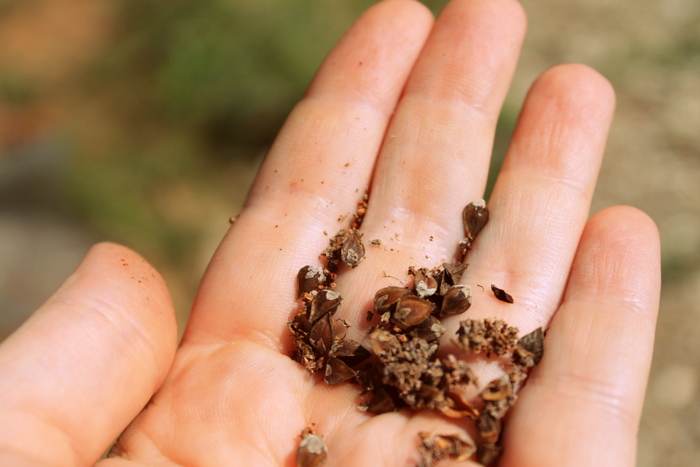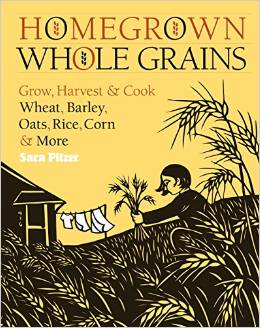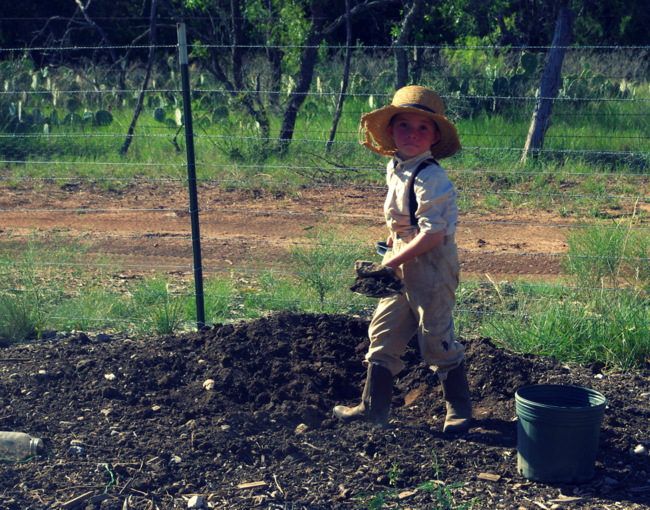Growing Seed Grains on the Homestead
One thing we have done a lot of in the garden is test patches. We’ve committed ourselves to large plantings of foods that we know work well here – cow peas, sweet potatoes, greens, etc. But we’re always hesitant to take up a lot of space with something we’ve never tried before.
Instead, we’ve thrown out seeds for different things to see how they handle the heat, drought, and clay soil. Some things fall flat on their face and others have surprised us.
Seed Grains
This year we planted three different types of grain, well some call them seed grains as they are not of the grass family. The first, millet, was intentional. Stewart threw some out into the pallet garden and we had a couple of heads come up. It was everyday millet that we’d purchased for food and I’m guessing that’s why we had a low germination rate.
The other two grains were buckwheat and amaranth. These were actually a part of a larger perennial insectary mix. They sure have helped with attracting beneficial insects and both the buckwheat and amaranth grew really well. I’m told you can eat the grains and the green from both the buckwheat and the amaranth. Has anyone else heard this?
Easy Threshing
The millet was of particular interest to us because it has a short growing season, likes the heat, and the grain itself comes out of the rest of the plant fairly easily. The buckwheat I have cracked between my teeth to remove the hull, but I’m thinking our Country Living Grain Mill might be able to crack it. I haven’t attempted to harvest the amaranth yet, but from what I can tell the seeds come out of the head fairly easily.
A grain that threshes easily is one of our interests as we’d like to use grain for both human and animal consumption where needed. I’ve worked with all of these grains in the kitchen previously, so any of them would be a welcome addition to our harvest basket.
We’ll see how things go next year. Perhaps buckwheat in the spring or fall and millet or amaranth through the summer? In the meantime, I think I need to get my hands on one of these books:









I have had the most success with corn as a staple grain on our small homestead. I usually grow an heirloom variety called Tennessee Red Cob and it produces very well in drought or monsoon rains. When ground, it makes an excellent white meal for corn bread, tortillas, etc. This year as an experiment I grew popcorn – “Pinkadelic Pop” from an heirloom seed corn saver. I was rewarded with about two or three colorful ears of corn per stalk that I plan on grinding or popping. My only problem with corn is that I have to coarse grind it by hand first, and then re-grind it in my electric Whisper Mill to get a fine-grained meal. The older Whisper Mill I have can’t handle the corn kernels before they are cracked a little.
I have tried to grow amaranth twice, but the insects here in N. Florida seem to love it. It grows for a while, then it becomes a battle to keep it from becoming insect fodder. I know you can eat both the leaves and the grains from it, but sadly it won’t work for us.
I have had some success with millet, but my family is not a fan, so the rabbits and the birds got it 🙂
Sorghum is successful for some in this area.
I hope this helps!
Hello,
how do you manage to separate seed from hull for human consumption?
How clean the final product is? I can see a system of sieves but cannot imagine the final ready-to-cook thing to be very clean.
This is our second year growing amaranth and last year we harvested quite a bit. We found it quite hard to get the seeds clean. This past winter we purchased seed cleaning screens which allowed us to get them 99% clean. The seeds are so light that when you winnow them they blow as well!
We tried to grown quinoa as well but it is too damp here for that, it went moldy as it was going to seed.
We are growing some corn to grind for flour, we’ll see how that goes. It is not ready to harvest yet.
We have had a lot of success growing the oilseed called camelina. It is a relative to flax but can be used at a higher temperature and has a much longer shelf life. We plan on pressing some to get a high quality oil.
I’ve been considering Amaranth and even Einkorn. Like you, I wouldn’t try a lot at a time. I want to see if it grows well and how much trouble it is to get it from harvest to flour. When you think about how much work goes into some things, you realize what a deal you’re getting at the grocery store.
Hi Shannon, I really like your blog!
I just recently (and randomly) came across a post describing a painful condition the writer had for several years until he discovered the cause, buckwheat sprouts. Apparently the leaves of the buckwheat plant contain a toxin which causes progressively worsening light sensitivity. Just Google buckwheat sprouts/toxic to learn more.
Thanks for this lovely spot in the blogosphere. It’s always a joy to read your posts!
Ditto on corn being best for us. We grew 3 acres wheat one year and it grew perfectly ( near Austin too ) but it was very difficult to harvest and process by hand. We cut off the heads with regular scissors, separated by hand rubbing on outdoor wood table, etc. Planning a smaller plot of wheat this year since it grows in unirrigated areas. We grow all kinds of corn but do irrigate it most the year. Loving glass gem this year, very fun taking a cob and picking of pretty little kernals to throw to the chickens. Aunt Mary’s sweet corn was also a stand out for taste but must be picked at the right time or it will turn to starch fast. Also good luck with tohono oodham 60 day flour corn this year and some dent corns like hickory and Cherokee white flour. Almost all corn gets bugs here but we just break off that top part of the cob and throw to the sheep. They love the leaves too. Sheep are great for eating all leftover food too and especially love cantaloupe and watermelon rinds or especially any split melons and old vines they get thrown across the garden fence.